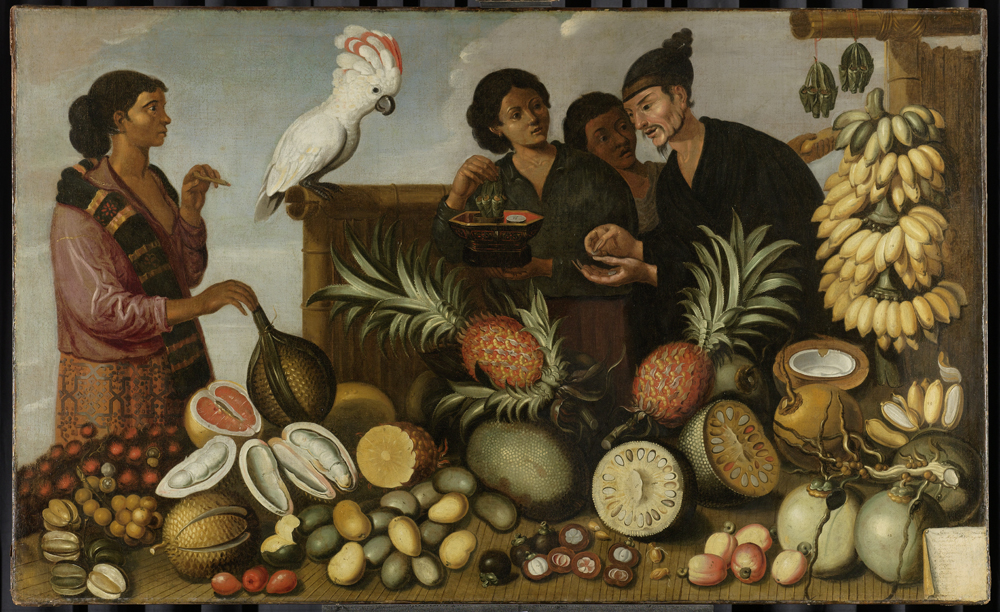Stop 9 - East Indian Market Stall
Andries Beeckman (attributed to), East-Indian Market Stall, c. 1660, oil on canvas, 106 x 174.5 cm, Rijksmuseum, Amsterdam, SK-A-4070.
For a Dutch viewer, the exotic fruits in this market stall would have been a mouth-watering but strange sight: ramboutan, durian, pineapple, bananas, coconuts and guava are all native to Indonesia. To aid the viewer in identifying these unknown fruits, the painter added a list to the bottom right corner of the work. Unlike paintings of Dutch market scenes which at the time would usually include a topographical view of a market place, this painting does not show the market's location but instead zooms in on one market stall. The presence of the Javanese women, the Chinese salesman and the Moluccan cockatoo seated on the bamboo fence, would have been perceived as exotic as the fruit on display and clearly indicate that we are in the East Indies, most likely Batavia.
European visitors to the Dutch colonial town were often stunned by “the quantity of fruit that is consumed in Batavia.” In 1662, around the time this painting was made, a Dutch traveller remarked how the fruit market “from four a Clock in the Afternoon till Night […] is so crowded with People, that there is scares any passing in it.”
Chinese men ran most market stalls. The Dutch artist might have depicted the man counting his money because Dutch prejudice held the Chinese to be either greedy and not to be trusted in trade, or reckless with money, gambling it all away. The Javanese woman next to him lifts some betel leaves from a beautiful Japanese lacquer sirih box. Many Dutch were disgusted by the local custom of chewing betel as it stimulated the flow of saliva and stained the teeth red. In Asia, however, offering betel was considered a gesture of peace and friendship and Dutch officers were therefore forced to adopt the local custom of chewing the bitter leaves because rejecting the friendly gesture would have been perceived as an offence.


- Next Stop
-

Stop 10 - Dubbels, view of Batavia
next